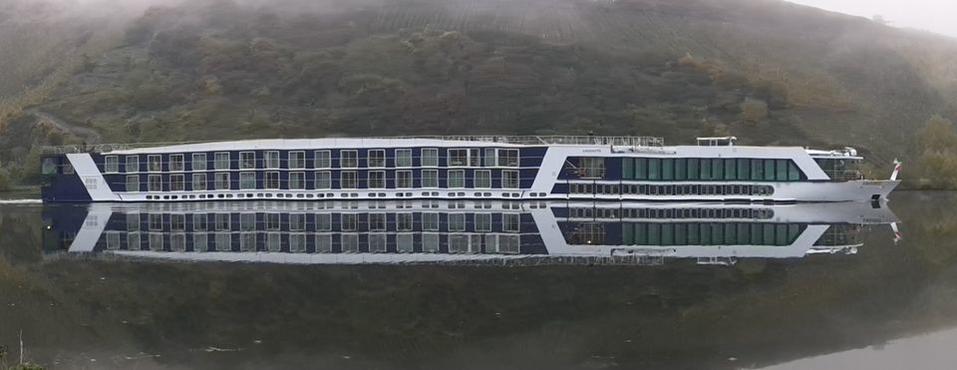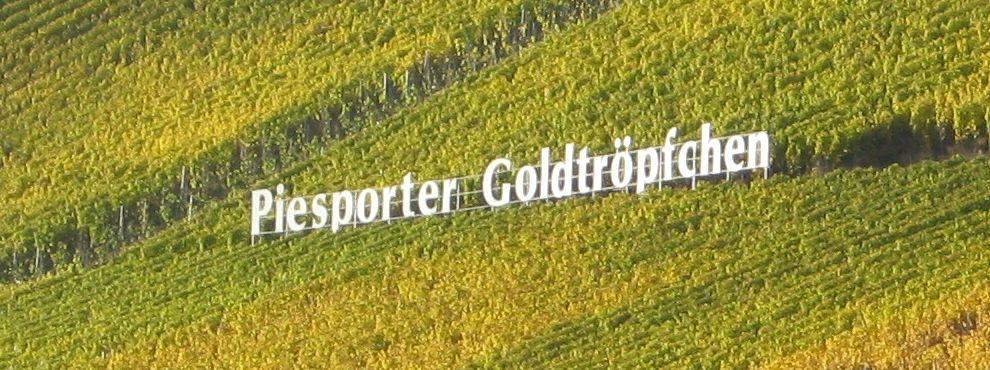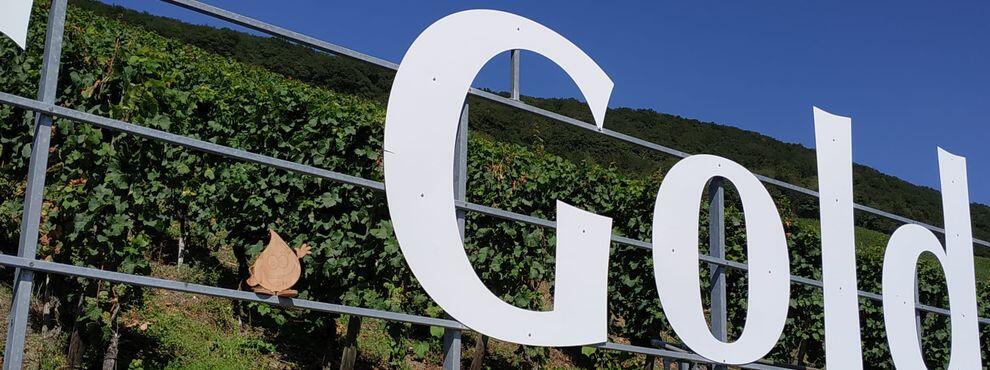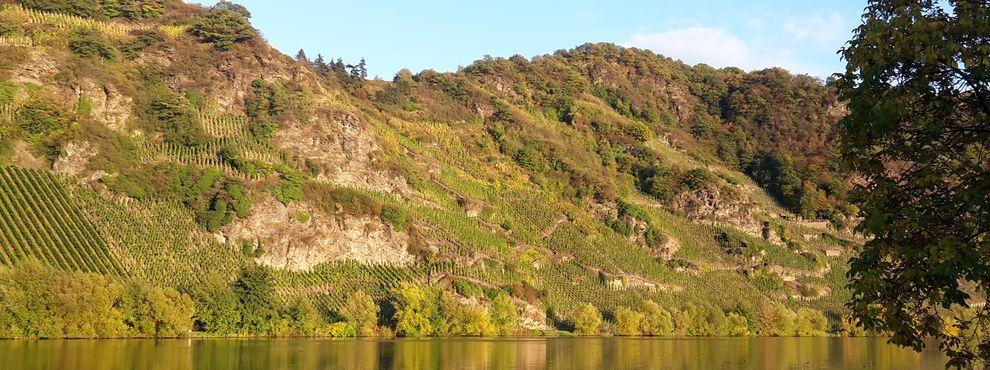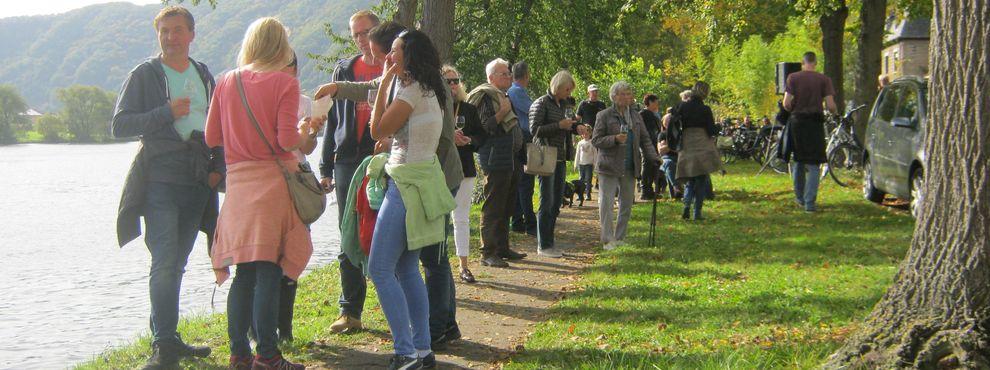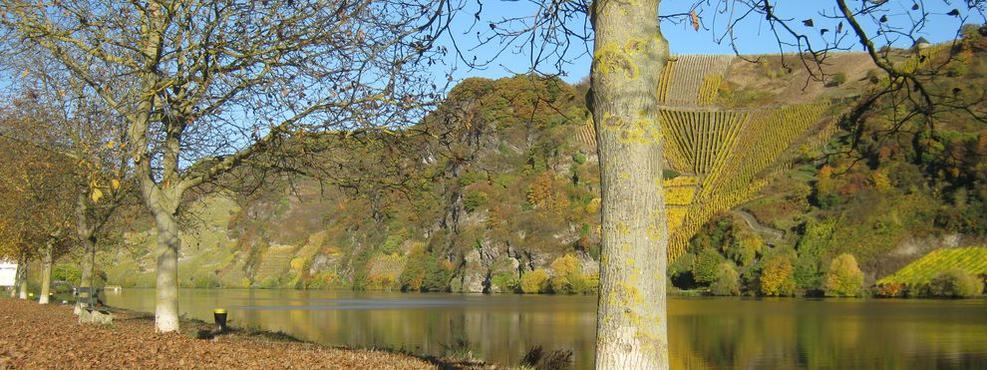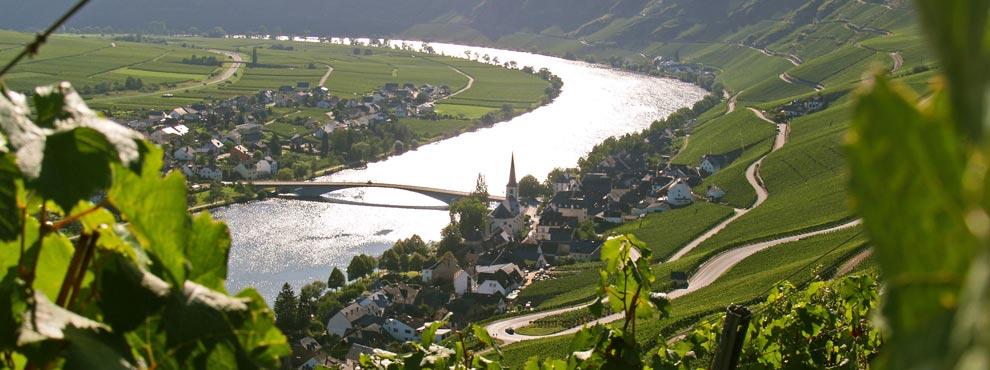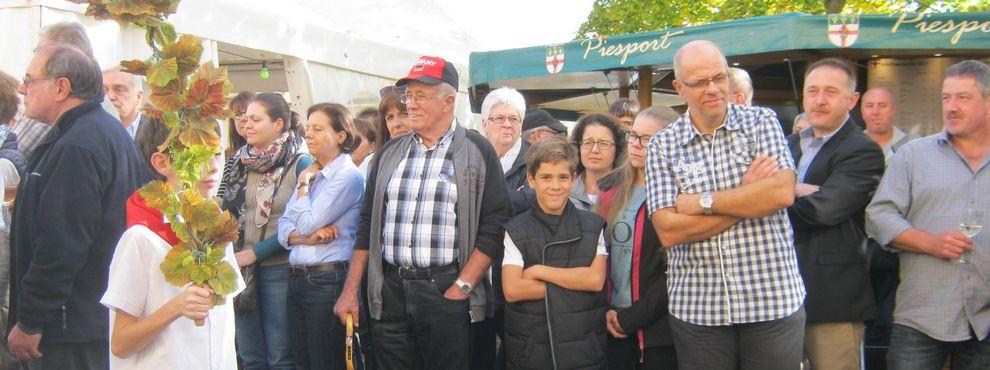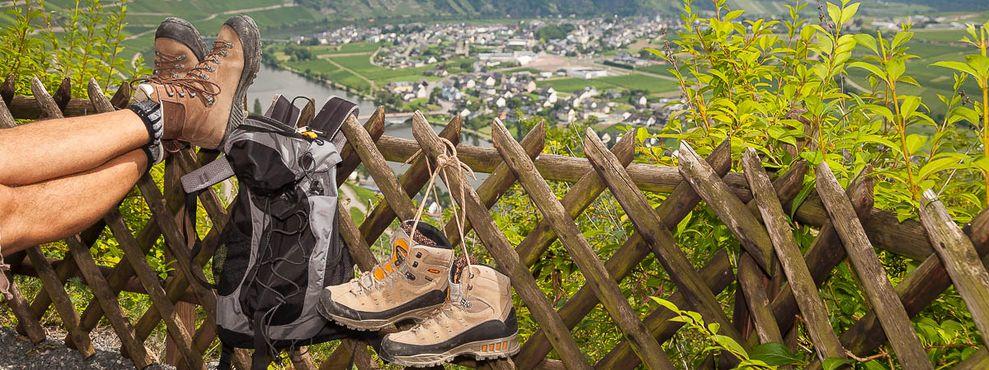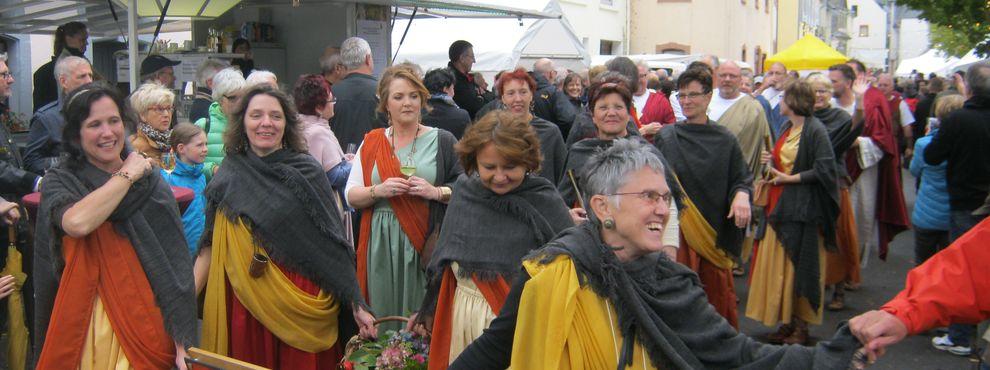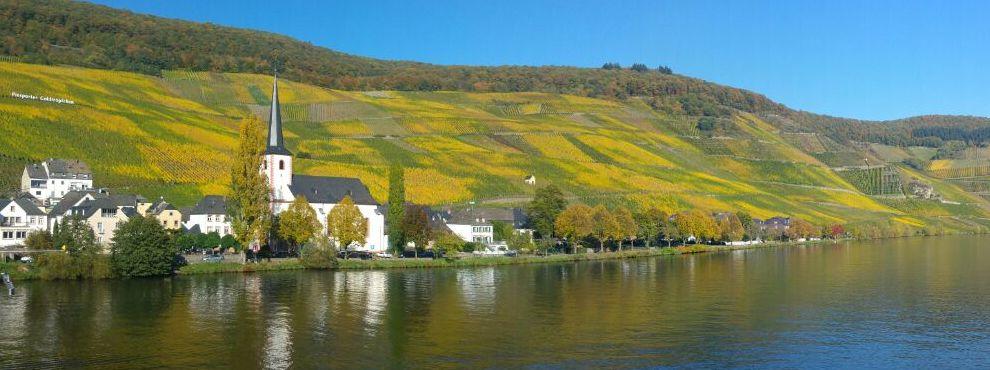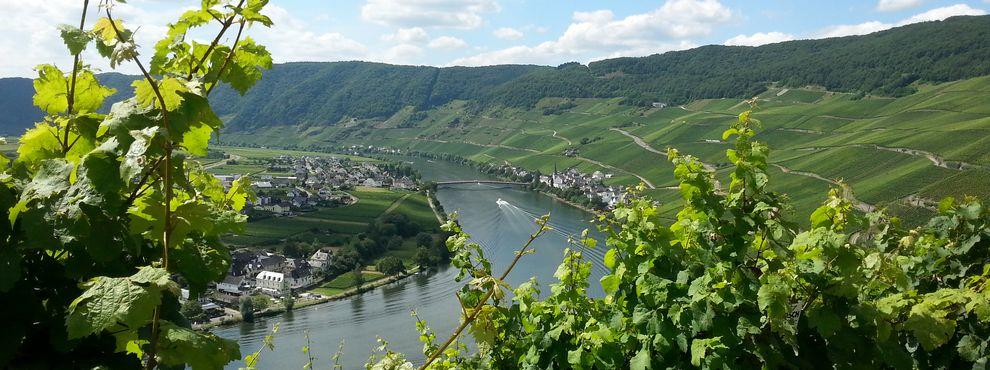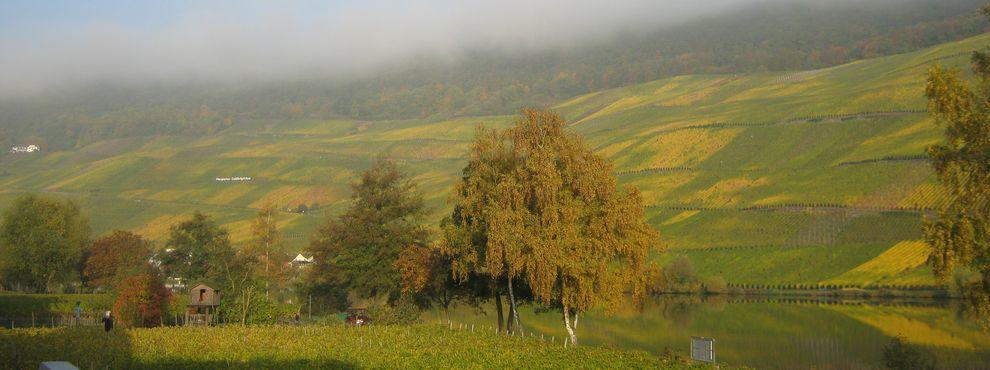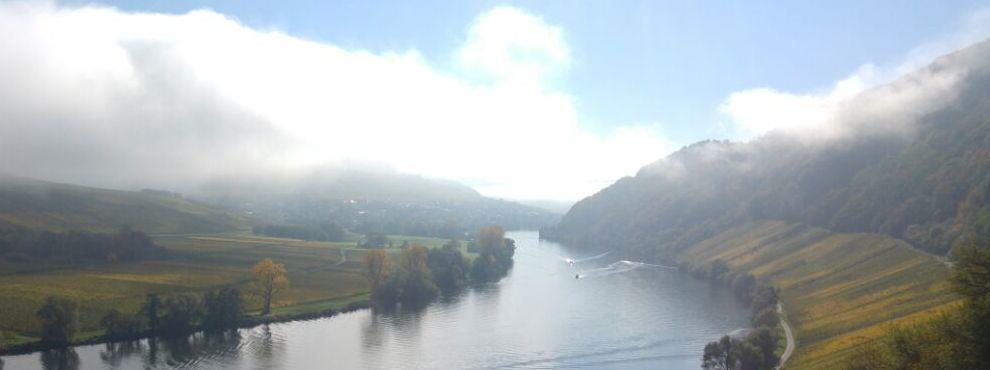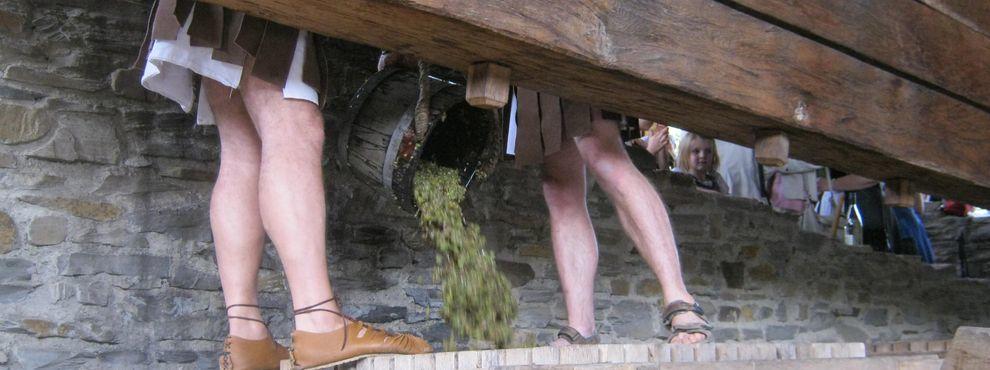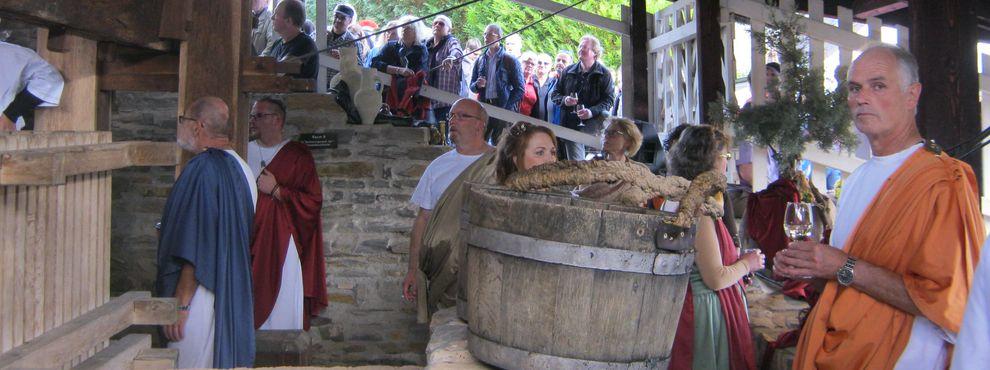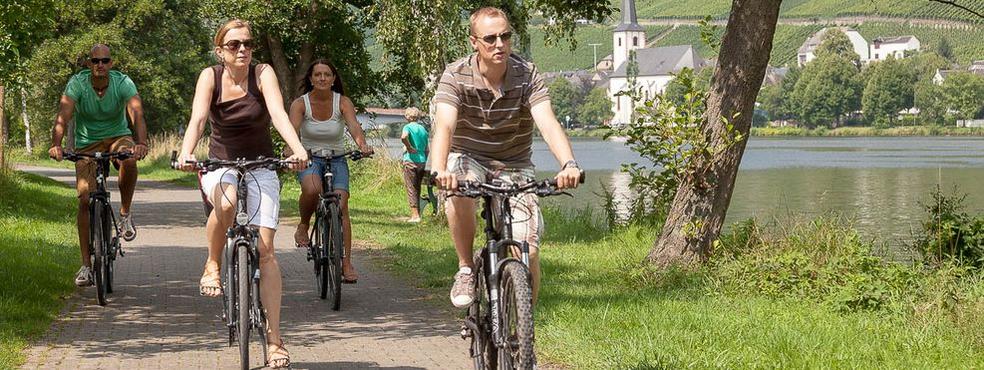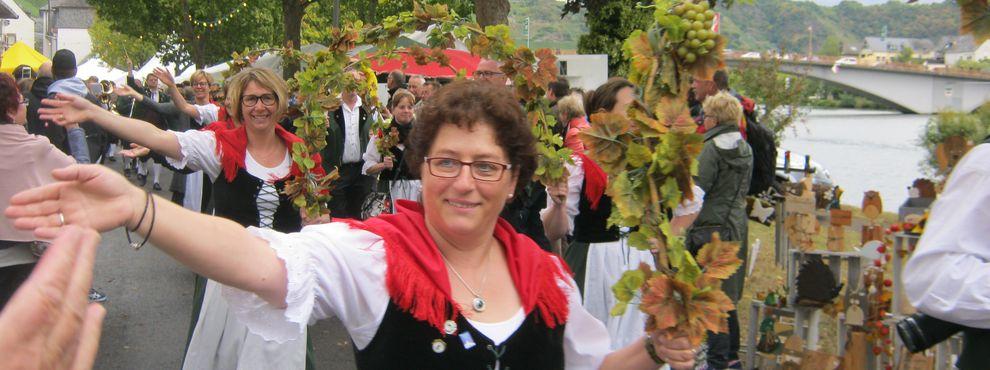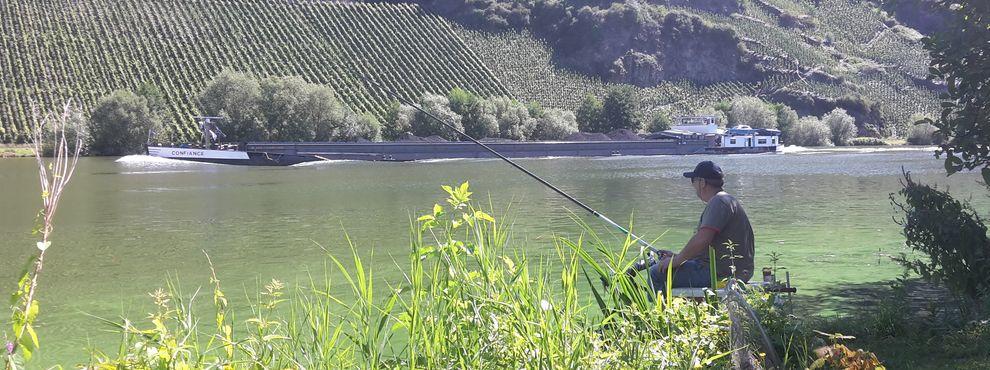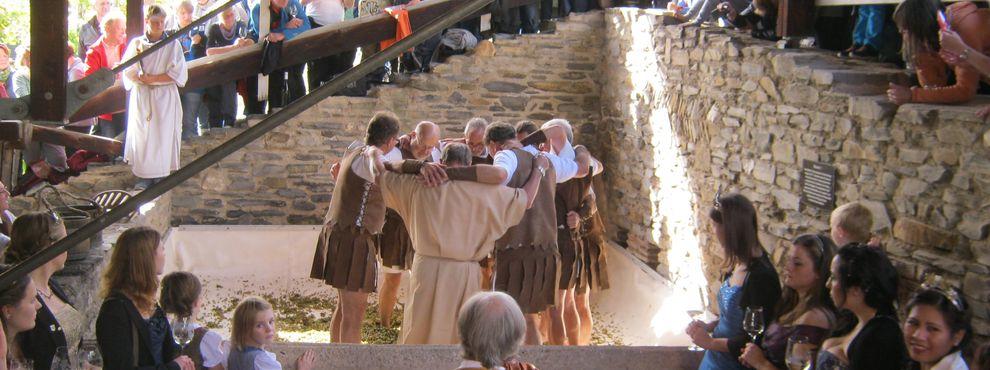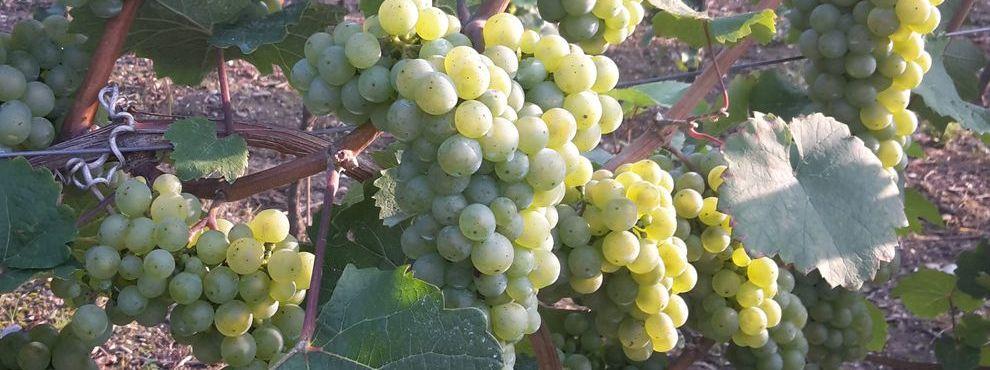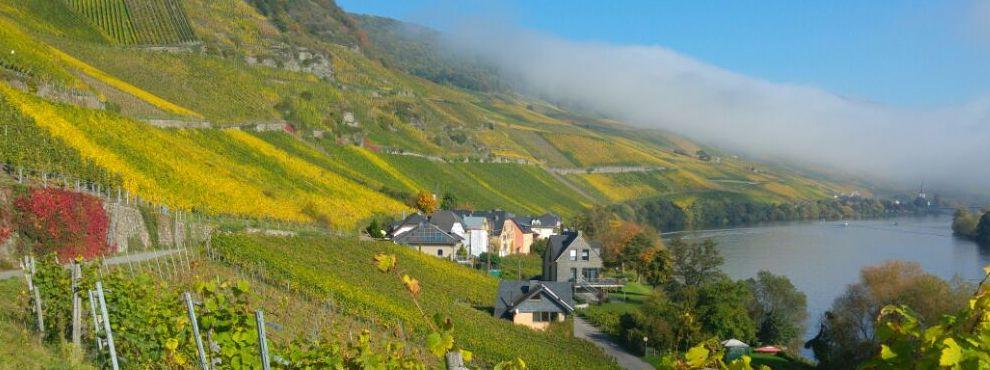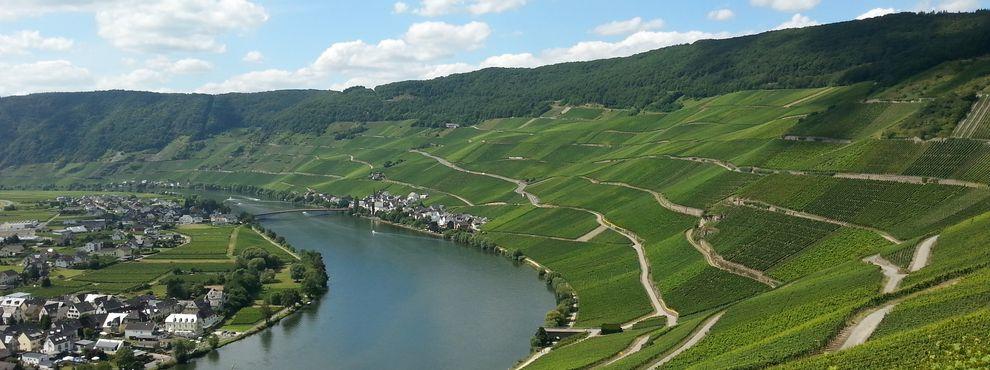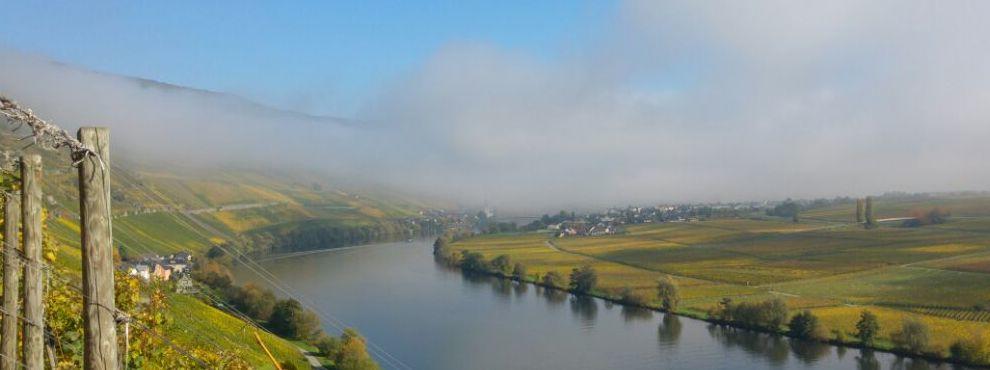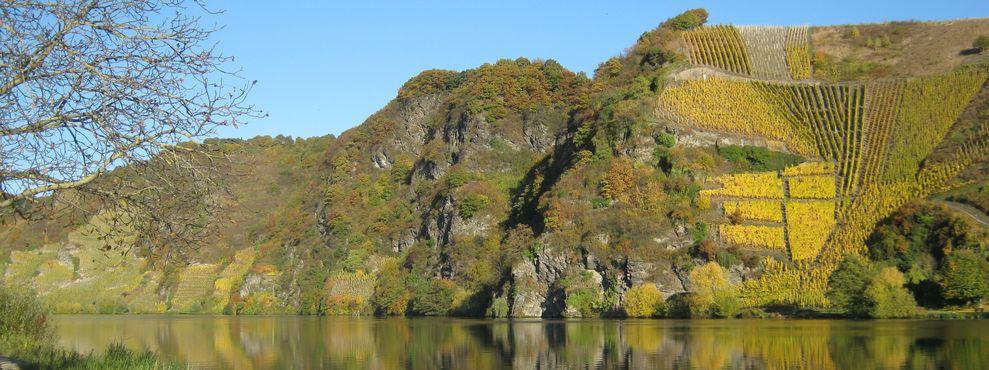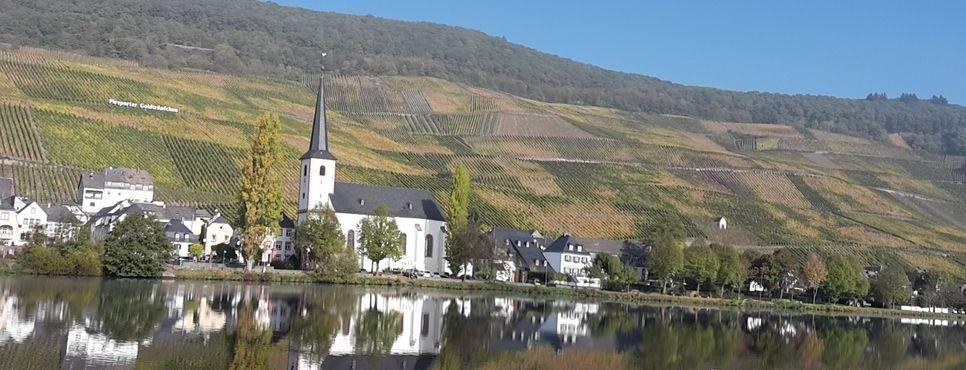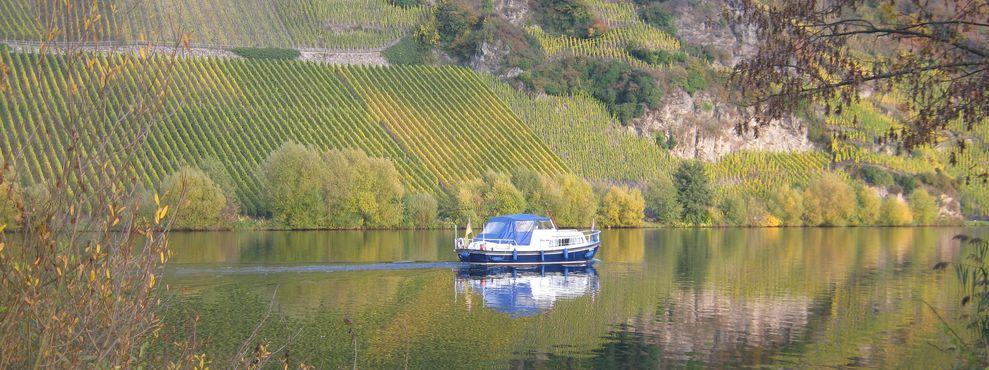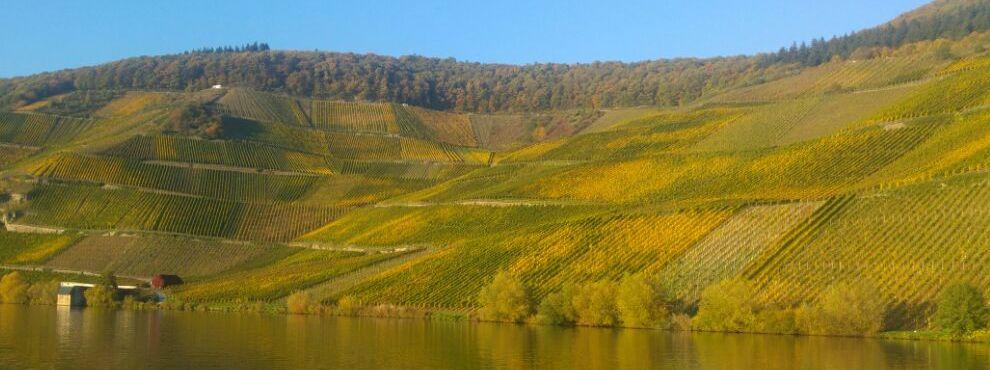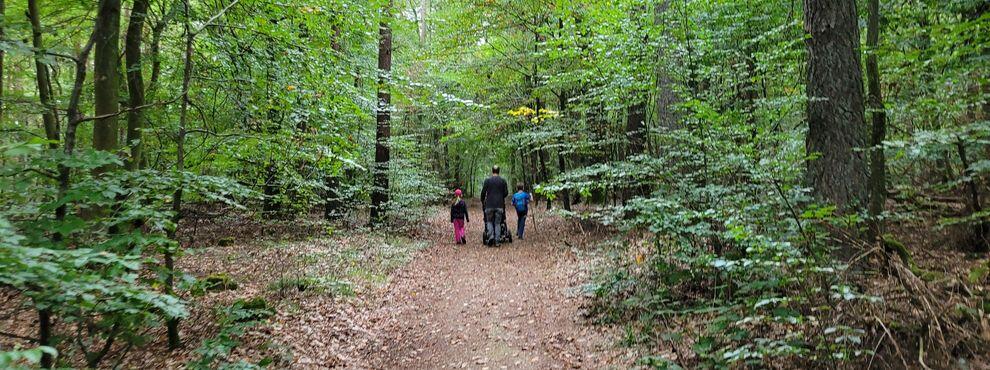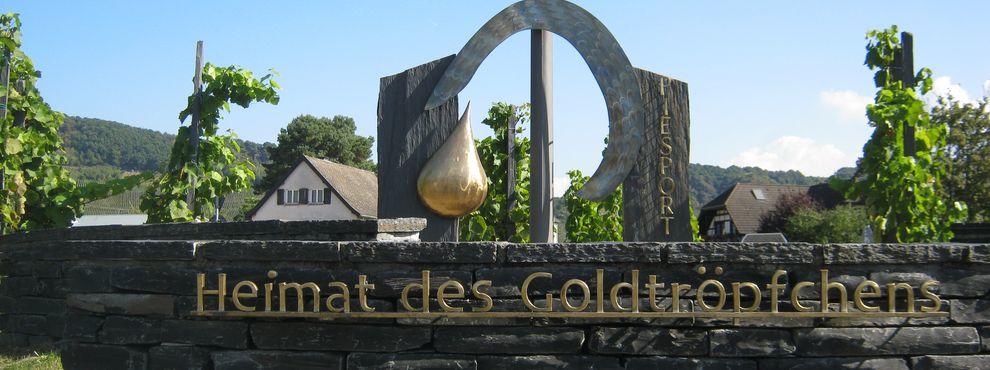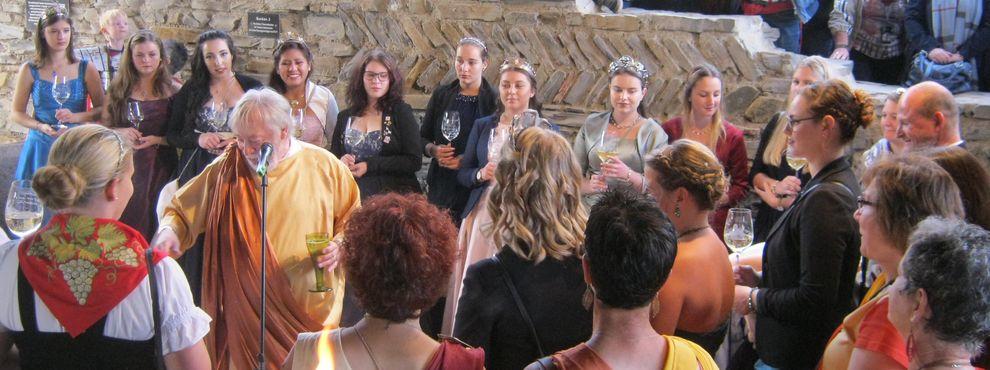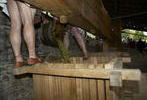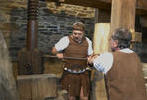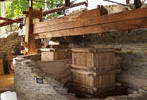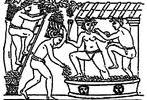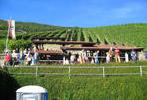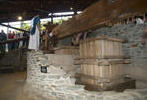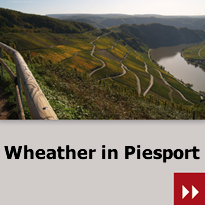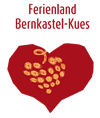The great Roman wine press of Piesport
Location: Piesport (Bernkastel-Wittlich region), "Im Briech", 1985/86, 3./4. Century BCE
The municipality Piesport always belonged to those towns of the Moselle Valley that could look back on a relatively early tradition of vineyards. According to this source, which is dated to the year 776/777, a certain Walac the Prümer bequeathed, among other properties, two small vineyards on the Moselle, in Piesport: "... vineolas duas super Fluvium Mosella (!) ad postage pigontio..." to the Abbot Assuerus. In 1985 a lucky new find not only confirmed of this document, but also archaeological evidence that wine was processed in Piesport since the 4th century CE.
During extensive studies by the Rhineland State Museum, done on the western outskirts (meadow "In Briesch") in the years 1985/86, evidence of more than ten rooms and seven pools or tubs of a larger Roman wine press could be produced. The continuously extended building covers a width of more than 44 m and a depth of at least 20 m at the most. The front of the building complex could not be completely studied, as it probably reached down to the banks of the Moselle originally and fell victim to recurring flooding in the post-Roman period.
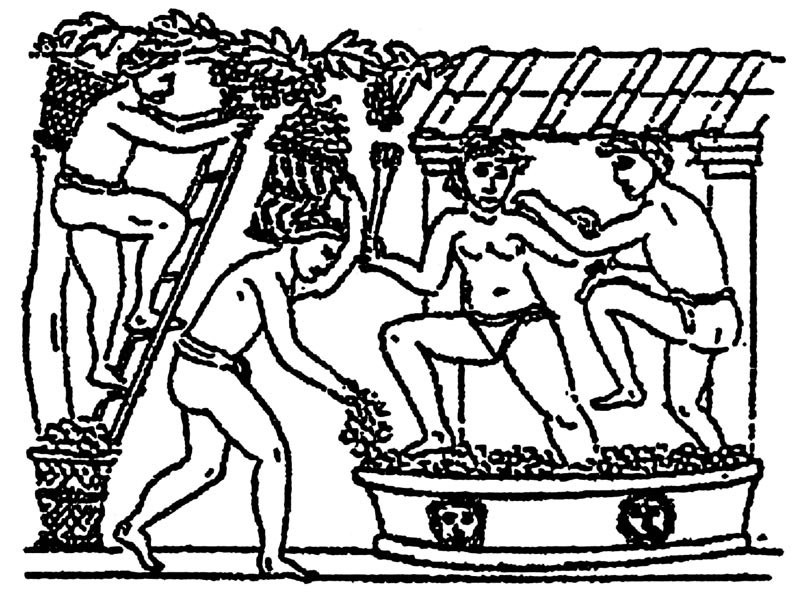
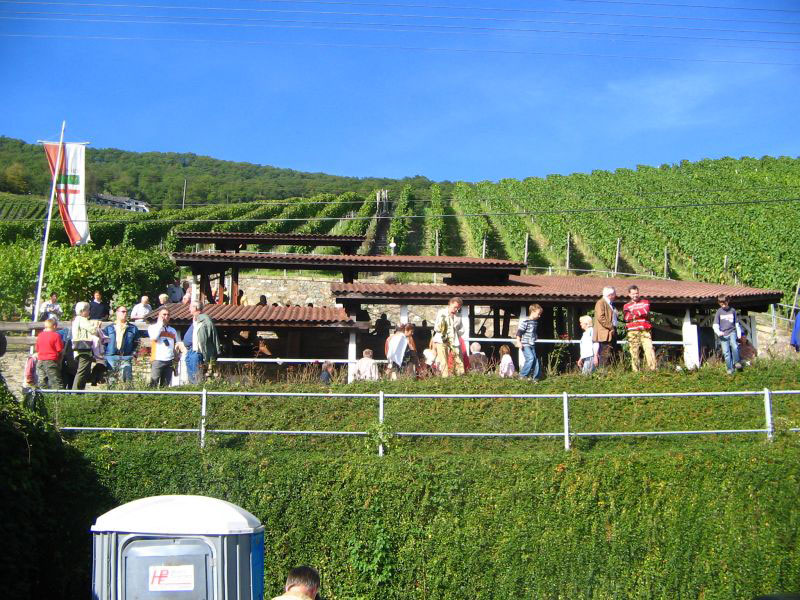
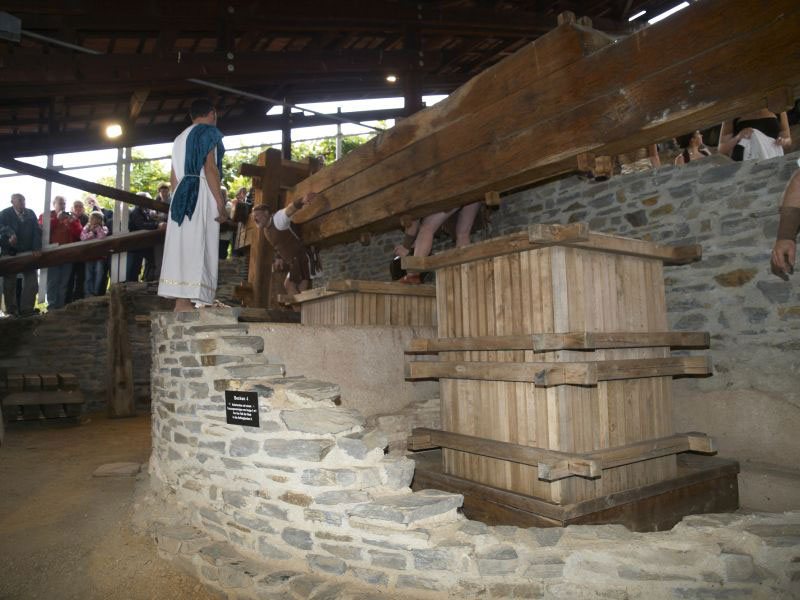
The peculiarity of the system is the number and arrangement of the pools, which were all provided with a screen made from a lime brick mixture and the angles were additionally sealed by a quarter rounded bar. The wine press initially included six pools of different shapes that were created in pairs of three in different terrain heights. The top, almost square basin (2 and 3) had a capacity of at least 11,000 or 12,000 liters. It could not be clarified whether they were connected to the quarter-circular pools (5 and 6) by an inlet since the wall was broken at the crucial points.
These much smaller pools only had a capacity of 4,000 liters. They were located within larger rooms (7 and 8), of which at least the western one gave indication of a tree press installed there. Mighty post holes of 0.60 m diameter, a stepped pedestal excavated next to them and a heavy sandstone weighing more than 20 quintals with lateral grooves that served the suspension apparently constitute the remains of a former tree wine press. From each of the quarter-circular basins, which are thus to be regarded as wine pool, a relief led in turn to deeper smaller reservoirs, of which the western one fell victim to subsequent conversions. The effluent from Kelter western basin was therefore diverted to the eastern pool. It is this drain that provided the first grape seeds from Roman times on the Moselle river. The common reservoir (4) held up to 2,500 liters. Fruit wine could be skimmed off and bottled from it on two sides. At the two non-accessible sides, steps were attached to the pool, which was probably only be entered when the last bit of fruit wine had to be used. In the area of the inflow, there was still an imprint of a box-shaped collector that was still visible. It was probably perforated like a sieve and had to catch the seeds and other wine residue. The capacity of the wine press seems to have become inadequate over the years, so that later, on the east side, another basin (1) with a volume of 7,500 liters had to be constructed. The spatial arrangement of the basin is hitherto without parallel in the Roman Rhineland, although a similar but much smaller facility was discovered at Maring-Noviand.
If other larger pools were present in Piesport, this might give an indication of the grapes used there. One might think of red wine because it has to mash a long time before pressing. Moselle descriptions of the 19th century still mention the cultivation of red wine several times. The last bit of red wine in Piesport is said to have been produced in 1910. So the Piesporter wine press comprises two or three mash pools, two wine pressing pools and two catching pools, and later, only one catching pool. It should also be considered whether the two wine-basins were not used for different tasks: Pressing the mash in the western basin and pressing the pomace (marc) in the eastern one after it was crumbled.
In the eastern basin, the press beam of the Baumkelter also had greater leverage because the bar was apparently inserted or affixed in or before the east wall of Room 8, but the weight of the weight-stone exerted pressure on the western end of the bar.
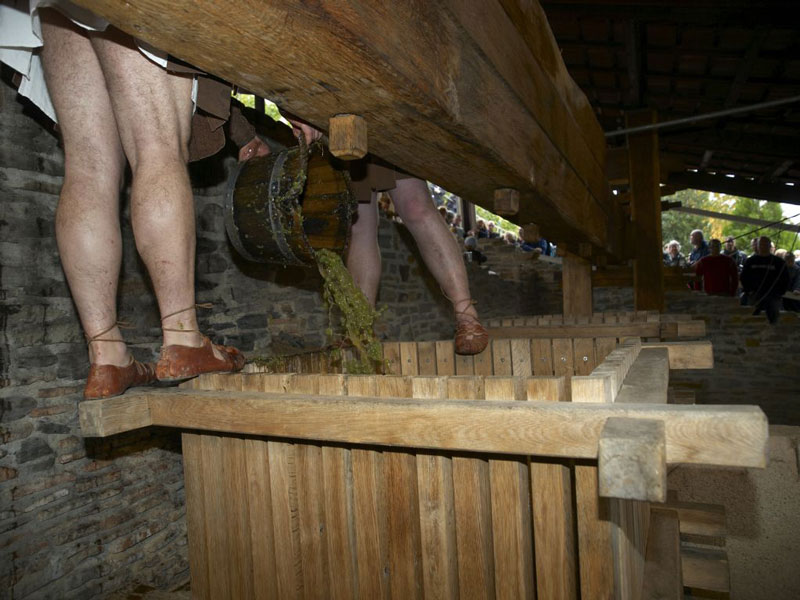
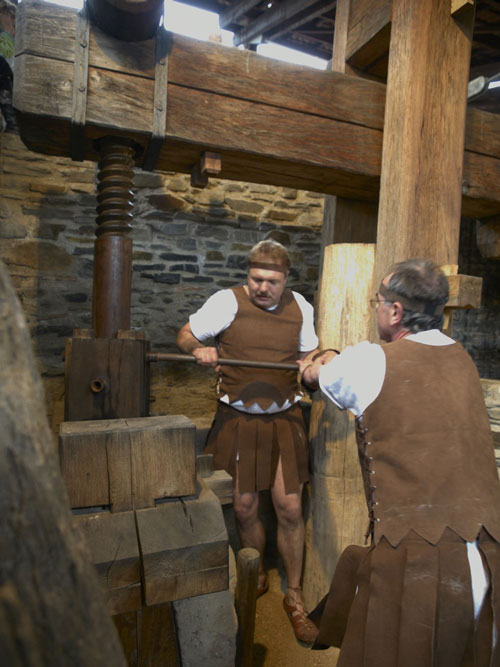
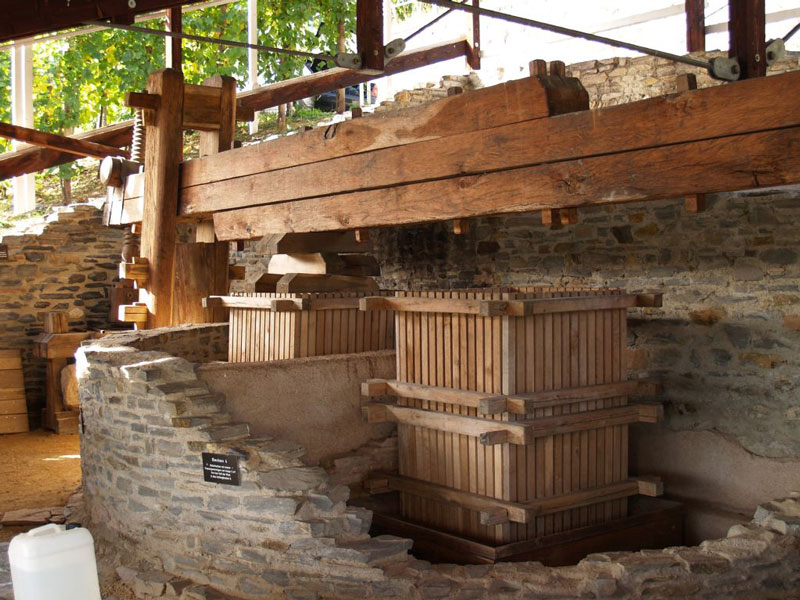
Also noteworthy is the western wing of the building, which was added afterward and to which belonged at least four smaller cellars partly dug into the rock (1-4). For the partition walls, carefully chiseled bedrock, which had to be supplemented by masonry at the top, was used. The walls of the basement still reached heights up to 3.60 m and were at least closed on three sides. To the south, on the fourth side, there were further rooms, largely destroyed in the course of construction, which are likely to have also acted as cellars. In a basement (3) a hypocaust (heating) was installed afterward, which had, however, a tubulation (flue) only in the room's corners, which apparently led to the basement space itself and not to the outside. Here, we are probably seeing the remains of a Fumarium, a smoke chamber, on which Columella (1,6,29), among others, reported in detail. According to these sources, the wine was matured more quickly in such a Fumarium by the supply of certain smoke. However, the smoky flavor was not always a positive side effect, as we can see from Martial's and Pliny's complaints about it.
These finds date our wine press to the 3rd, or at least the half of the third / fourth century CE. Scattered Merovingian shards, like two 7th century graves on the eastern neighboring property excavated in 1949, could indicate a continual use until the early Middle Ages. Also noteworthy are a number of smaller pruning hooks and a lead seal which, because of its shape and inscription, likely comes from North Africa and is perhaps an indication of spices that were added to wine in many places in the ancient world well into this era.
Perhaps, the size of the mash tank allows us to draw conclusions about the scope of the former vineyards. If we think about red wine, the usual mash process takes 10-14 days, which is significantly shortened in warm years. Thus, the mash tank could be filled at least twice during a sorting period. This would correspond to a capacity of more than 60,000 liters. The subsequent cultivation of another mash basin shows that the original volume of 45,000 liters was not enough. From the former yields and wine options (6,000 to 7,000 liters of mash = 3,000 to 4,000 liter of fruit wine) we can, therefore, postulate a vineyard of at least 10 hectares that, like our wine pressing house, would have to be searched for in the "Goldtröpfchen" area, the best wine growing area in Piesport. In the case of white wine one would expect an acreage a fifth larger, which would correspond to more than a quarter of today's cultivated area of Piesport. While the fruit wine was initially transported and stored elsewhere, four, maybe eight, cellars were built later, which in turn would correspond to a storage possibility of 15 or 20 cart loads or the yield of 10 ha .
The late time and the
size of our wine press makes one think less of a private and more of a public institution in the manner of a domain
which maybe even did work for the imperial court or the prefecture in Trier.
Author:
Dr. Karl-Josef Gilles
Rhineland State Museum, Trier

